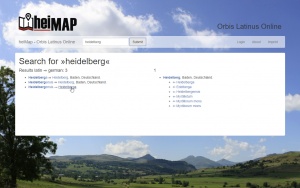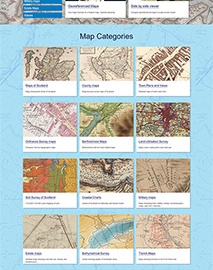HGIS de las Indias is a project funded by the Austrian Science Fund (FWF), P 26379-G18, located at the Historical Institute of the University of Graz. Its purpose is to provide a common spatio-temporal data framework and an online visualization (a dynamic, interactive, and customizable WebGIS, https://www.hgis-indias.net/cmv-app-master/viewer/), for the historical geography of Bourbon Spanish America before the eve of independence.
The language of the project’s documentation, interface, and applications is Spanish only. Its main features include:
- A gazetteer of 12000+ places and 1000+ territorial entities designed to enable integration of third-party data.
- Geometries (.shp) of the spatial representations of gazetteer entries for open access download.
- A WebGIS with dozens of themed layers, which can be controlled via a time-slider. Main groups of layers are:
- Territorial organization at 12 “levels” (districts, provinces, bishoprics…)
- Populated places: by settlement type; by parish/mission status, etc.
- Communications: Major navigation routes, postal routes; post offices…
- “Internal” and “external” affairs: Treaty lines, independent indigenous groups, foreign claims, rebellions, etc.
- Aggregated data: Layers with information on cultural aspects (universities, printing), demography, economy (silver production, mining mita…)
- Georeferenced old maps
- A Dokuwiki-infrastructure for documentation and possible crowd-sourced further description of the gazetteer.
- Standardized workflows to enable easy “spatialization” of well-formed tables that link to entities in our gazetteer. They work quite well already and by the end of the project we hope to even offer a web-based submission interface that allows to process an uploaded table and automatically return a shapefile as a result.
- A mostly-OCR-based digital edition of the 5-volume „Historical-Geographic Dictionary of the Indies“ (1786-1789) by Antonio de Alcedo, linked to the gazetteer entries in the Dokuwiki. However, human ressources for manual cleanup are low, so unless additional funding can be gathered, only important cities and territories can be referenced, and the edition cannot claim to meet any standard of scholarly digital editions. Ideas for a collaborative editing environment for the five TEI-XML files with a low hurdle for contributors are welcome!
Contact: Werner Stangl via www.hgis-indias.net


